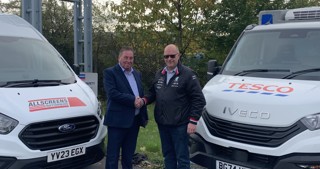By Tim Camm, technical manager, National Windscreens
As technical manager for National Windscreens, I am often asked what is the biggest change facing the industry and, for me, there is only one answer: ADAS and the growing need for calibration.
You may ask, “What is ADAS and why does it matter to me?” Well, more and more vehicle manufacturers are using advanced driver assistance systems (ADAS) to ensure their vehicles meet the highest European safety ratings.
Changes were made to Euro NCAP safety ratings early this year meaning any new vehicle wanting to be granted the prestigous five-star rating has to include two separate ADAS systems with automonous emergecy braking and lane departure warning being compulsory.
This is causing a welcome increase in the use of ADAS which makes our roads safer for all – in fact, 10 of the leading vehicle manufacturers have already committed to long-term investment in them.
The ADAS systems – which also include lane keep assist, night vision cameras and adaptive lighting – constantly monitor the surroundings and environment around vehicles and provide alerts or warnings to avoid collisions or potential hazards, or even take control of the vehicle where a driver has failed to identify a potential danger.
But how do they work, and why do they need calibration?
Well, most of the ADAS systems that are becoming increasingly popular use forward-facing cameras found on or around the vehicle’s front windscreen.
This camera collects the required data to ensure the ADAS systems work but this information has to be accurate so if, for any reason, the camera becomes mis-aligned then the data being collected will produce an incorrect action, leading to potential danger for road users.
Some workshop repair processes require the front-facing camera to be calibrated on completion with replacement of the front windscreen being very high on the list.
ADAS will continue to grow rapidly in the future.
In fact, recent figures anticipate that by 2020 more than 40% of new vehicles will have at least two types of driver assistance systems fitted.
Therefore, you should make sure any workshop carrying out autoglass work on your vehicles is calibrating correctly and that you get a certifcate to prove it, helping to ensure our roads are even safer places for everyone.


















Login to comment
Comments
No comments have been made yet.